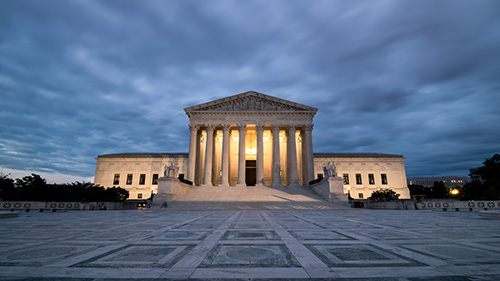From the Courtroom to the Classroom: Teaching Supreme Court Cases in AP U.S. History
One of the personal stories I frequently share with my students is how I nearly became a lawyer. I majored in political science and philosophy in...
AP & Honors Mathematics
Explore Wiley titles to support both AP and Honors mathematics instruction.
Literacy Skills & Intensive Reading
Connections: Reading – Grades 6–12
Empower student success with a proven intensive reading program that develops strong reading skills in striving readers.
Drama, Speech & Debate
Basic Drama Projects 10th Edition
Build students’ confidence and competence with comprehensive, project-based theatre instruction.
Literature
Connections: Literature
Support learners as they study dynamic, relevant texts and bring the richness of diverse voices to students through literature.
Literature & Thought
Develop critical thinking, reading, and writing across literacy themes, genres, historical eras, and current events.
Language Arts
Vocabu-Lit® – Grades 6–12
Help students build word power using high-quality contemporary and classic literature, nonfiction, essays, and more.
Connections: Writing & Language
Help students develop grammar, usage, mechanics, vocabulary, spelling, and writing and editing skills.
Reading/English Language Arts
Measuring Up to the English Language Arts Standards
Incorporate standards-driven teaching strategies to complement your ELA curriculum.
English Language Learners
Measuring Up for English Language Learners
Incorporate research-based best practices for ELLs with an approach that includes a focus on language acquisition strategies.
Mathematics
Measuring Up to the Mathematics Standards
Incorporate standards-driven teaching strategies to complement your mathematics curriculum.
Foundations
Measuring Up Foundations
Help students master foundational math skills that are critical for students to find academic success.
Science
Measuring Up to the Next Generation Science Standards
Give students comprehensive NGSS coverage while targeting instruction and providing rigorous standards practice.
Assessment
Measuring Up Live
Deliver innovative assessment and practice technology designed to offer data-driven instructional support.
For a better website experience, please confirm you are in:
3 min read
John Irish Jun 27, 2024 10:30:20 AM

Contextualization is an intriguing skill introduced in the redesigned AP History courses. It plays a crucial role in multiple aspects of the courses, including multiple-choice questions, short-answer questions, and essays (such as the Document-Based Question and Long Essay Questions). Mastering contextualization brings various benefits to both teachers and students, such as earning points on essay rubrics and gaining a deeper understanding of the past, present, and future.
According to the College Board, contextualization involves analyzing the context of historical events, developments, or processes. The DBQ and LEQ rubrics further define it as describing a broader historical context relevant to the prompt. In the decision rules, it is stated that the response must establish connections between the prompt’s topic and broader historical events, developments, or processes that occurred before, during, or after the question’s time frame. To simplify the concept for teachers and students, I often refer to contextualization as understanding the “big picture.” It entails determining how events like the American Revolution fit into the broader narrative of U.S. History, which is crucial for comprehending historical connections and disconnections.
I like to approach contextualization in two ways. The first is the macro version, which is the more common interpretation of context within the broader skills. It involves considering how the American Revolution fits into the larger narrative of U.S. History. To facilitate understanding, I encourage teachers and students to adopt specific vocabulary. The concept of pre-contextualization is analogous to a “previously on...” segment in a TV show. It serves to provide viewers with context about how the upcoming episode aligns with the overall story arc. Similarly, a “next time on...” segment offers post-contextualization by demonstrating how the episode connects to the broader narrative going forward. Both pre-contextualization and post-contextualization help viewers see how each episode relates to the larger story.
However, when TV shows display contextualization clips, do they include scenes from every season? Most likely not, as earlier seasons may no longer be relevant due to new characters, storylines, and so on. The key to understanding both pre-contextualization and post-contextualization is relevance. The clips shown must be relevant to the episode being watched. Similarly, students should consider relevance to the topic and argument they are making in U.S. History. I suggest using fifty-year windows as a guideline. For instance, if the topic covers the period from 1800 to 1850, pre-contextualization should focus on 1750 to 1800, while post-contextualization should extend to 1850 to 1900. It’s important to note that this is not a rigid rule but rather a way to prioritize relevance. If a connection falls outside the fifty-year window but remains meaningful and relevant, students should embrace it. However, considering the time constraints of essay writing (approximately 30 to 40 minutes), going further back or forward in time requires more steps to establish meaningful connections.
Daily practice can help develop and reinforce contextualization skills. During class discussions, encourage students to think about pre- and post-contextualization and connections to periods outside the immediate topic. Consistent practice will make the process easier, enabling students to internalize contextualization and apply it effectively in formal essay writing.
There is also a micro-level approach to contextualization, specifically related to documents within the DBQ essay. While the DBQ primarily emphasizes macro contextualization (as it is a point on the DBQ rubric, shared with the LEQ), it also incorporates a micro view of contextualization. This micro view aligns with the HIPP point on row D of the DBQ rubric. HIPP is an acronym used to assess the use of documents in the DBQ. Students are required to explain how or why a document’s point of view, purpose, historical situation, and/or audience are relevant to their argument for at least three documents. Notably, the historical situation was previously referred to as historical context but was renamed to reduce confusion regarding the many instances of contextualization on the rubric. However, historical situation essentially refers to contextualization on a smaller scale—connecting individual documents to the essay’s broader argument.
Contextualization is a significant skill for both theoretical and practical purposes. Theoretically, it enhances understanding of how historical events relate to earlier and later periods, fostering historical awareness. Practically, it is linked to specific points on essay rubrics. By comprehending the distinctions between various aspects of this historical thinking skill, students can develop a deeper understanding of history and perform better on exams.

One of the personal stories I frequently share with my students is how I nearly became a lawyer. I majored in political science and philosophy in...

This lesson aims to show teachers and students how to develop a historical argument using Document-Based AP History (DBQ) documents. We will use...

The Secondary Source Short Answer Question (SAQ) on the AP history exam presents a unique challenge: students must analyze and synthesize historical...

Experienced AP World History teacher Dave Drzonek and AP World History Exam table leader Charlie Hart discuss what students did well and what they...

In 2015, the College Board introduced several changes to the AP U.S. History course and exam. One significant addition was the inclusion of new...
.jpg)
Do you need some ideas and/or extra support to organize your AP® European History course? Join Lou Gallo as he shares ideas on organizing your course...

Unlock the power of historical thinking and writing as you elevate complexity and engagement in AP History classrooms. Presented by experienced AP...

Do you need some ideas and/or extra support to organize your AP® United States History course? Join Lou Gallo as he shares ideas on how to organize...

Between 1607 and 1754, the British presence in North America vastly increased and there were more than 30 British colonies. Among those colonies were...

From a practical point of view, argumentation is at the heart of the free response section of the AP exam. This can be particularly difficult with...

One of the greatest rewards of teaching history is when students can show that they can make effective arguments supported by historical evidence....

This lesson module can be used by regular or AP® World, U.S., or European History teachers to develop an understanding of how sport has been used as...
